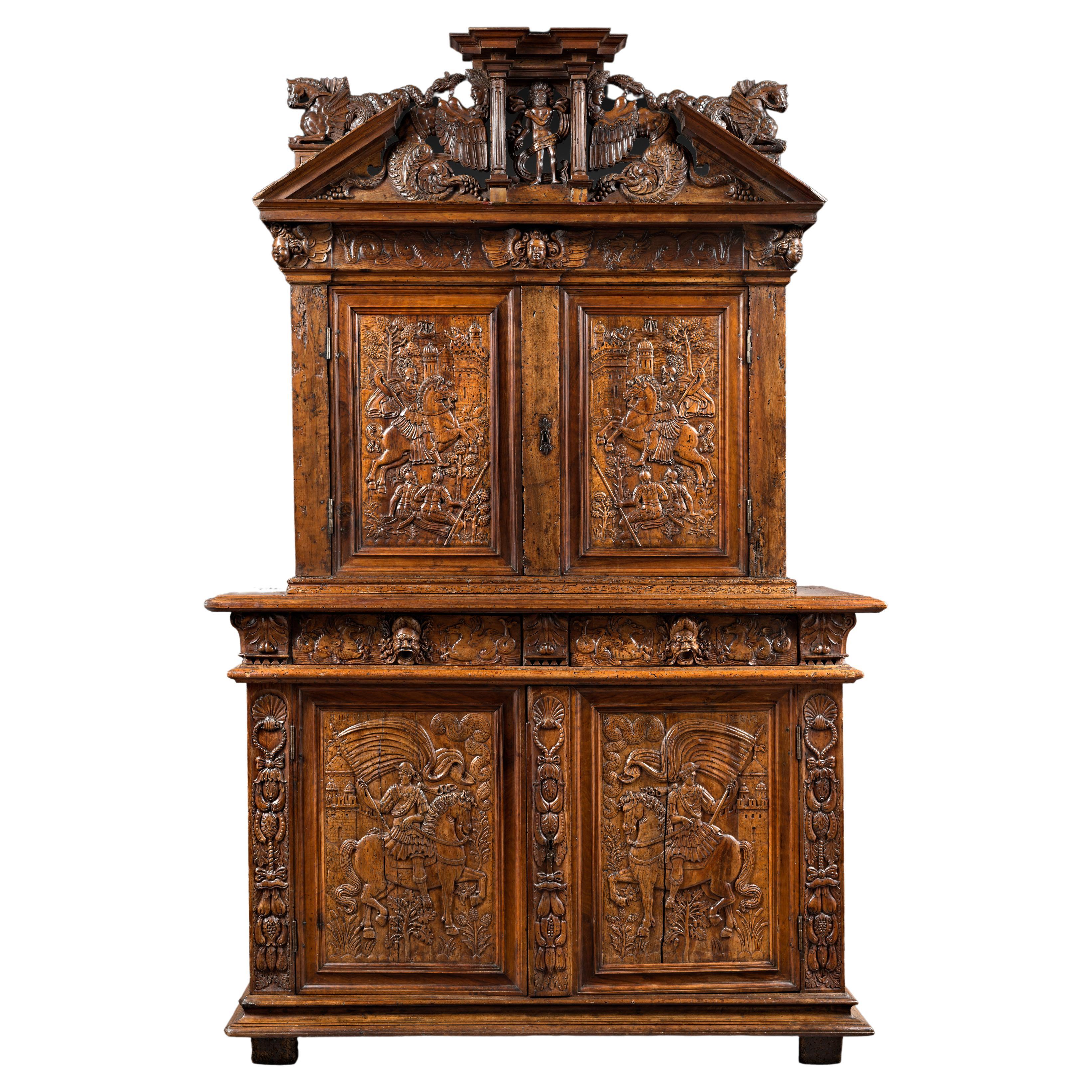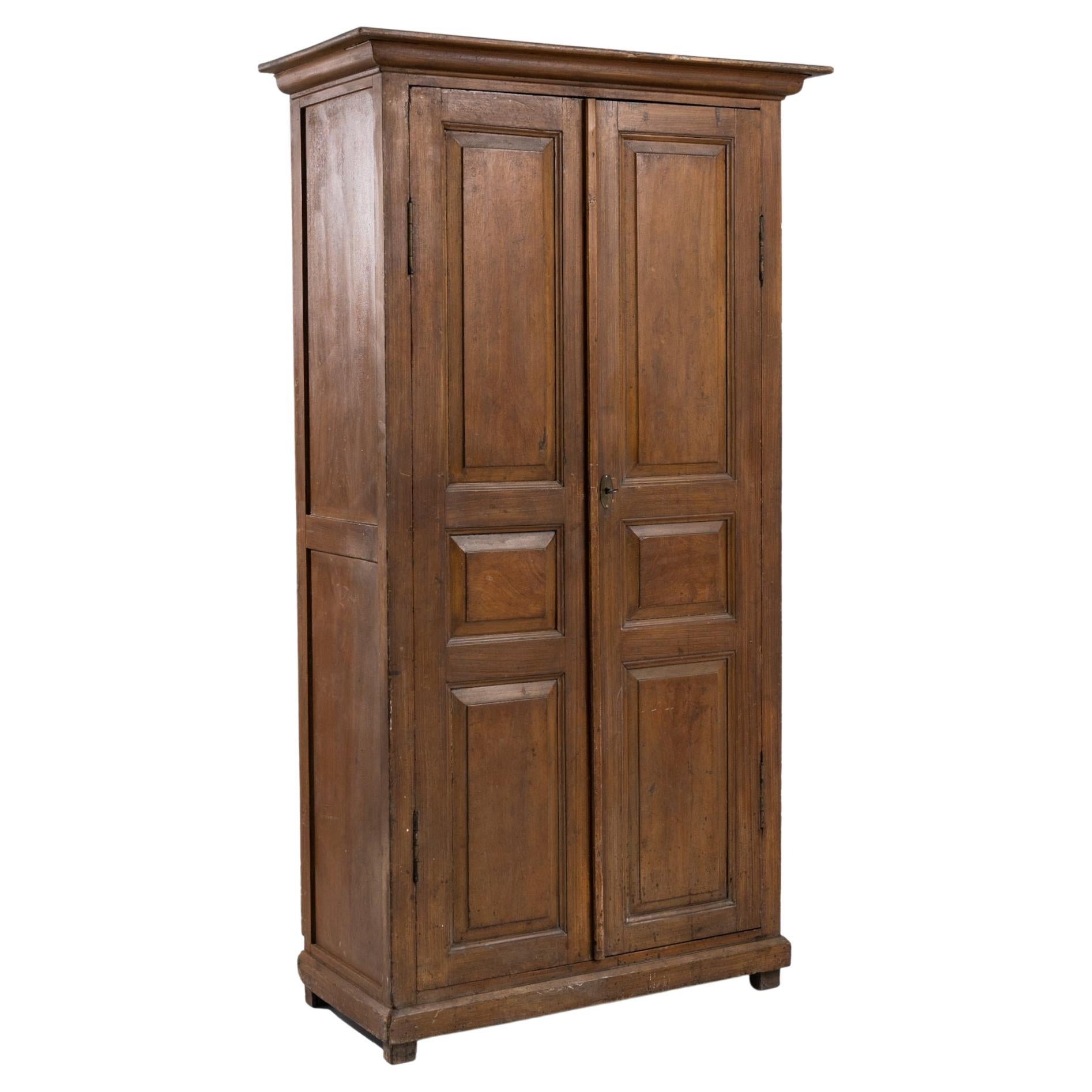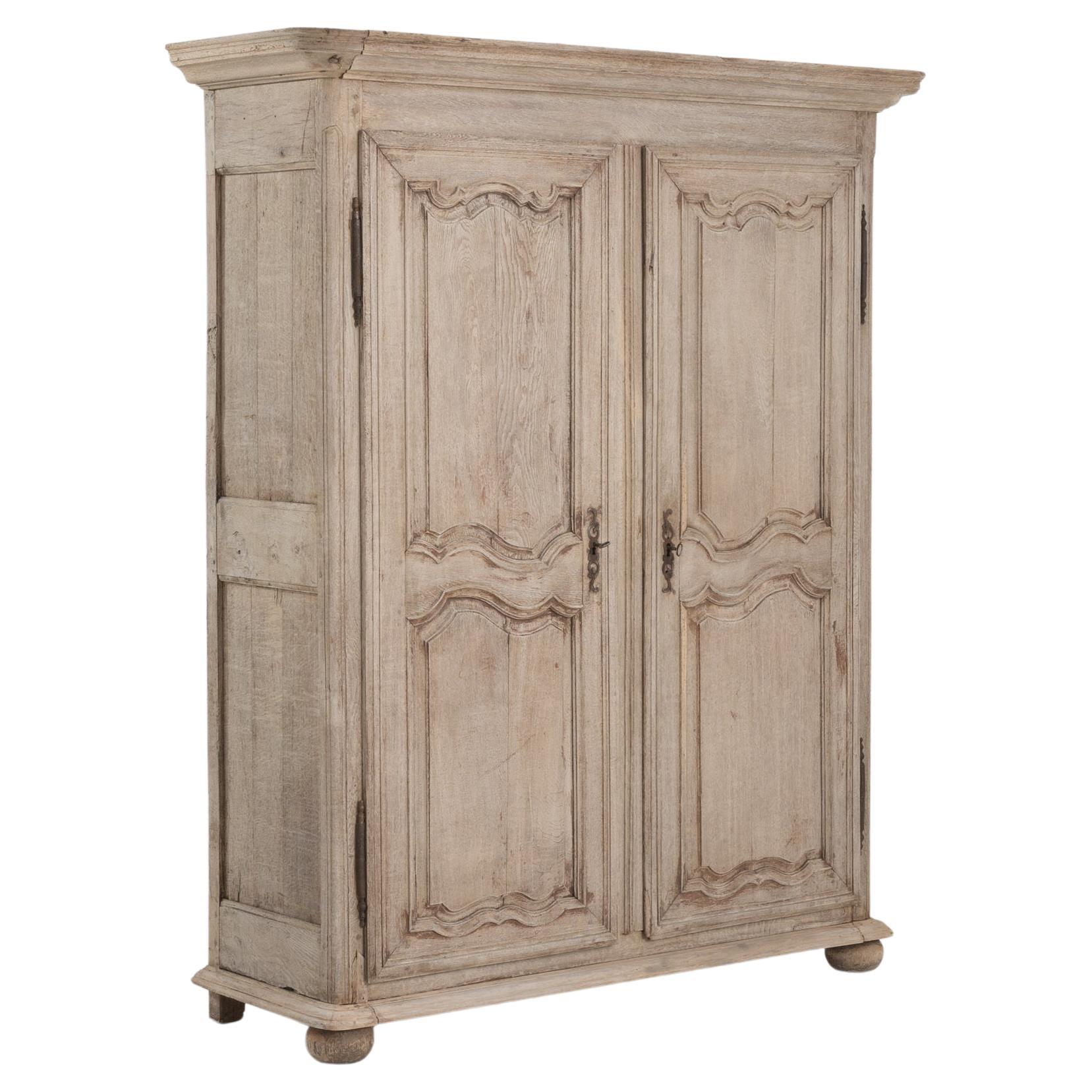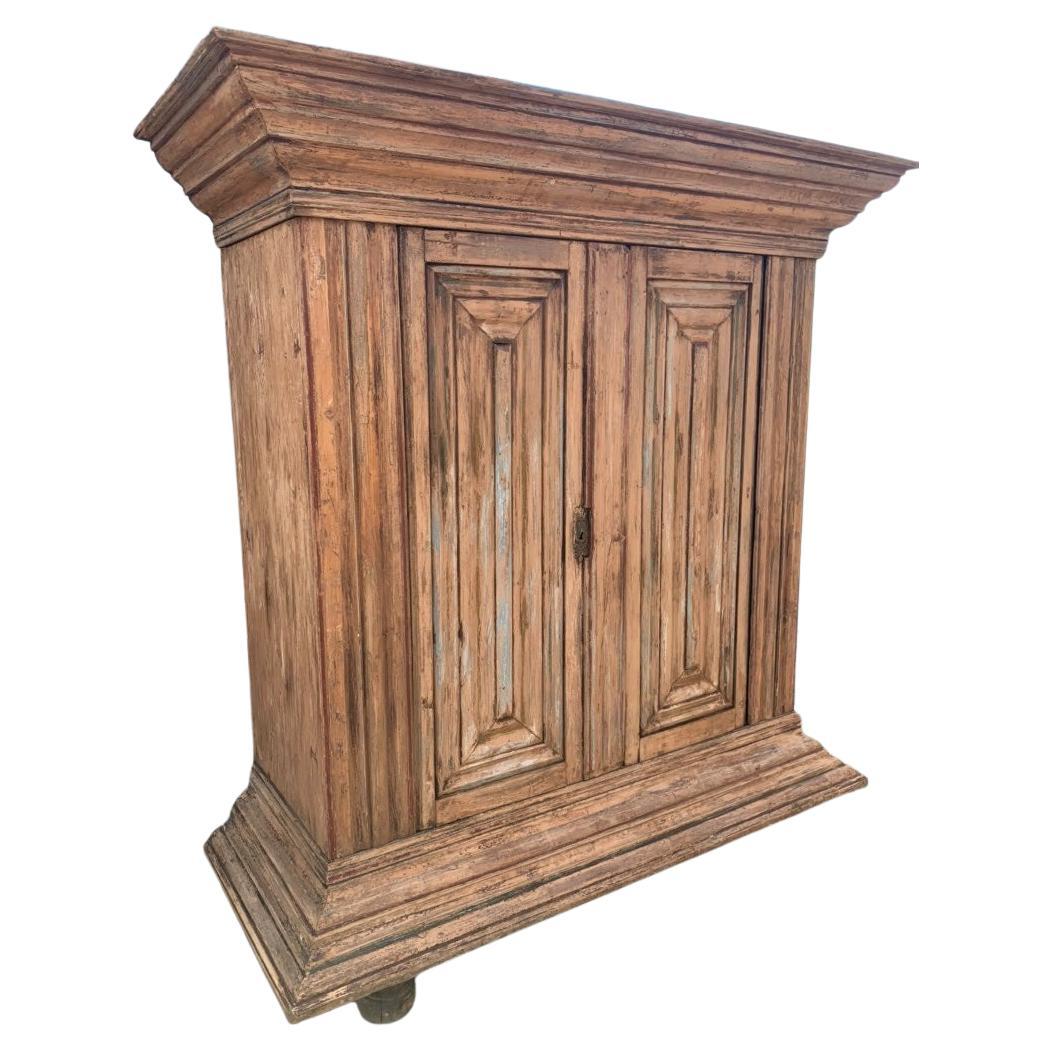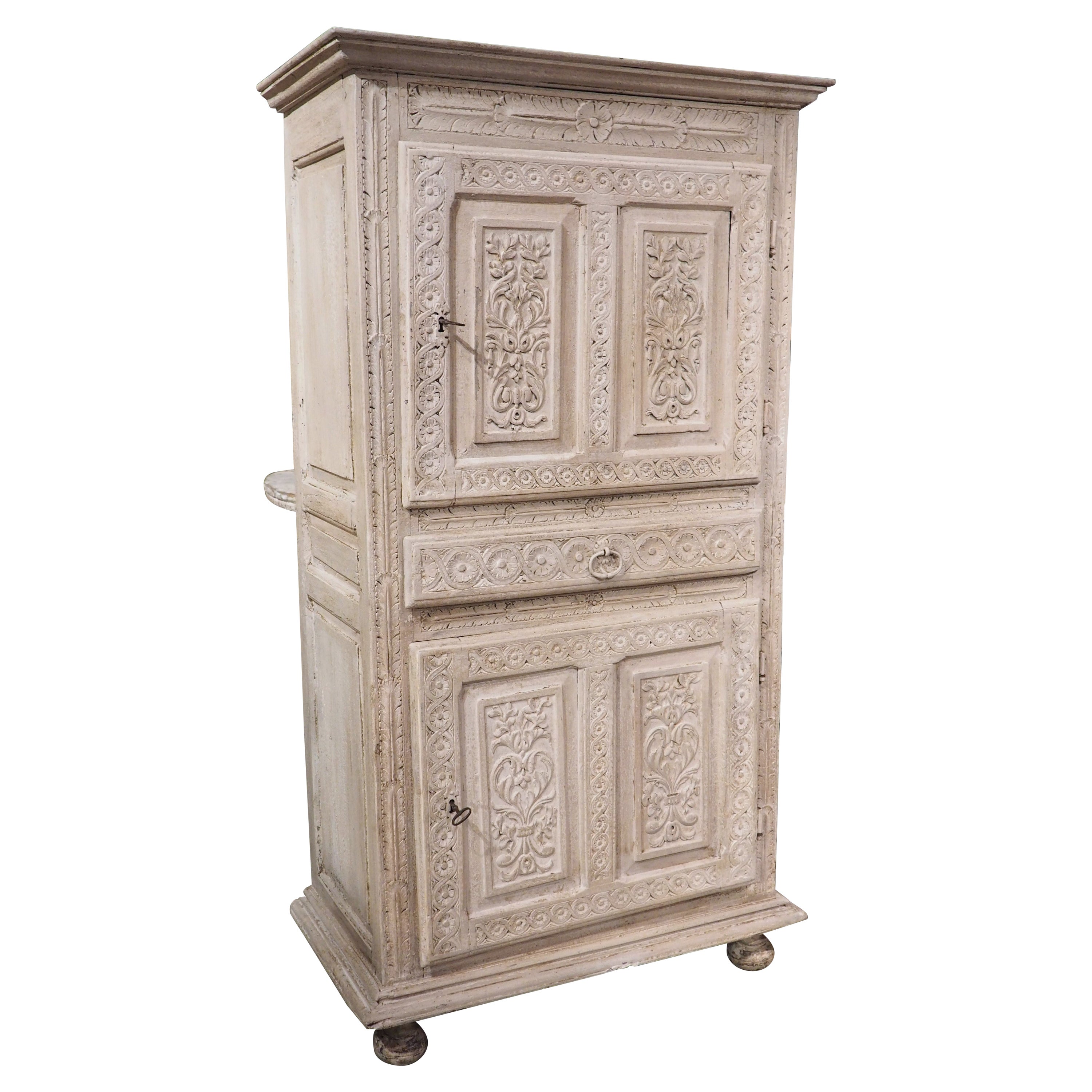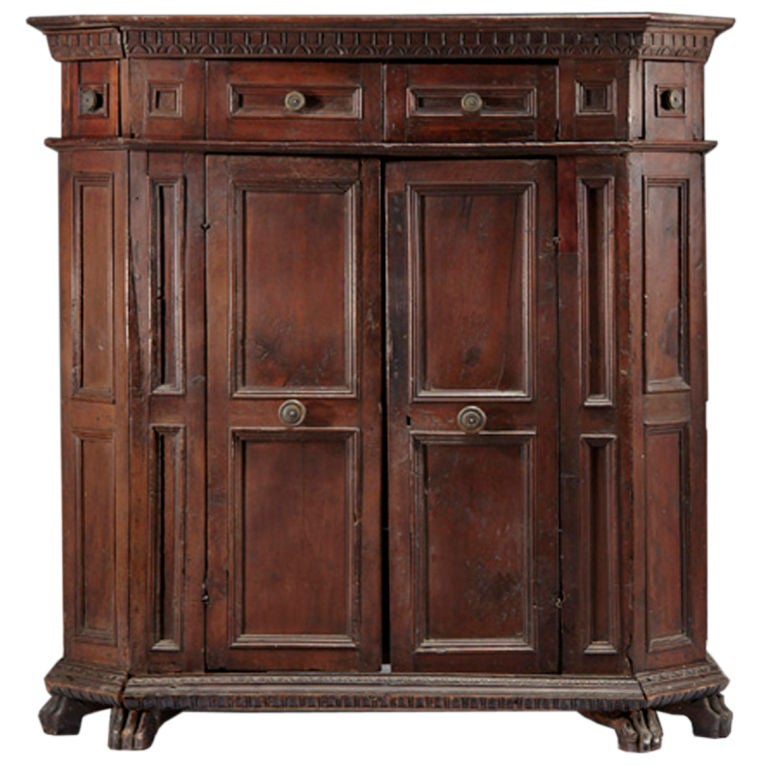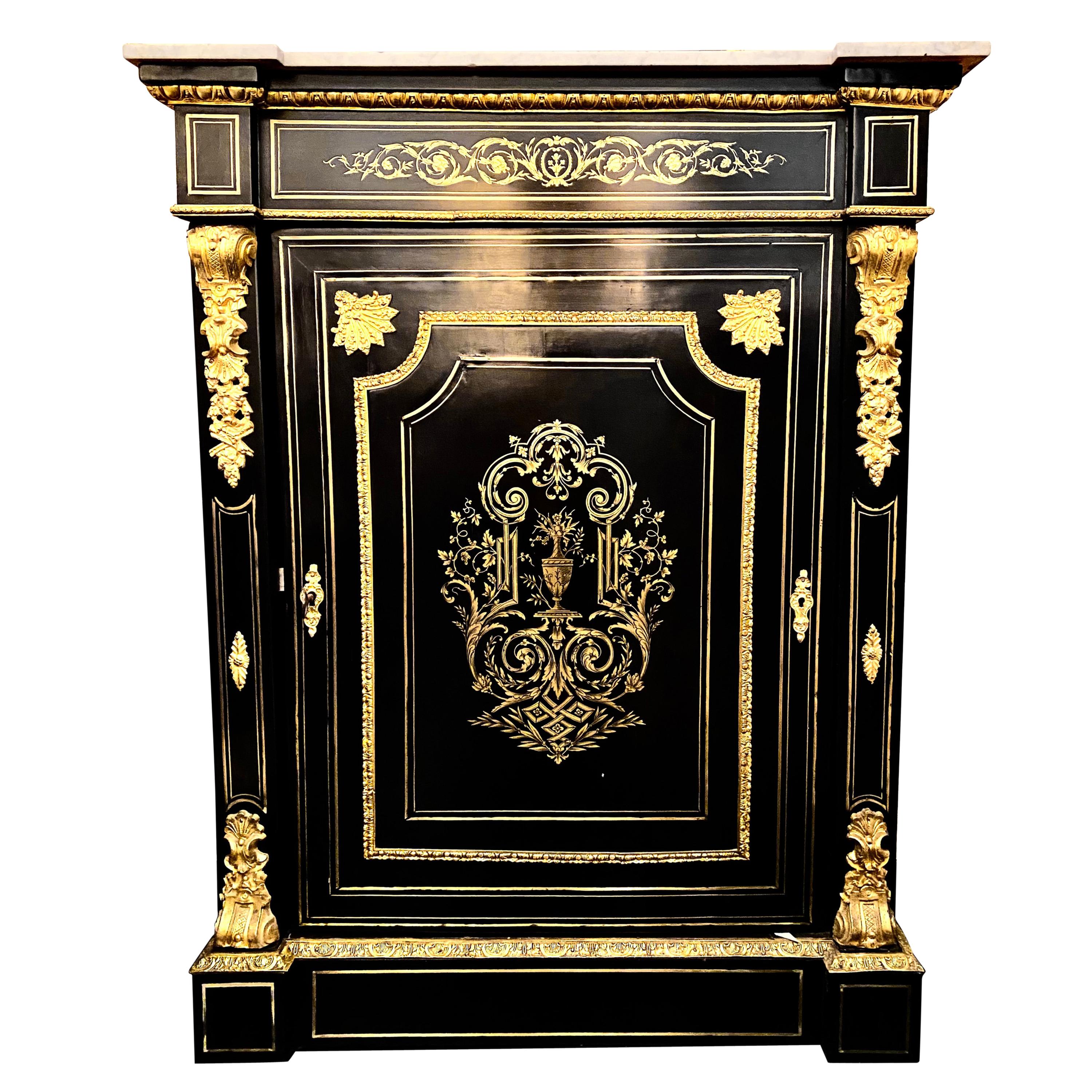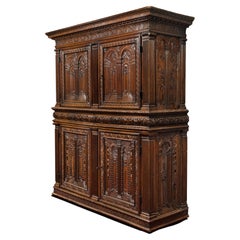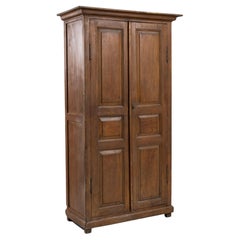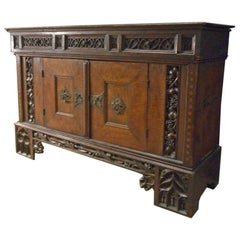
Rare Early 16th Century Naïve Cabinet from Béarn or Côte-basque, 'France'
View Similar Items
Want more images or videos?
Request additional images or videos from the seller
1 of 7
Rare Early 16th Century Naïve Cabinet from Béarn or Côte-basque, 'France'
About the Item
- Dimensions:Height: 67.33 in (171 cm)Width: 50.4 in (128 cm)Depth: 16.93 in (43 cm)
- Style:Gothic (Of the Period)
- Materials and Techniques:
- Place of Origin:
- Period:
- Date of Manufacture:Early 16th Century
- Condition:Repaired. Wear consistent with age and use. Minor losses. Minor structural damages.
- Seller Location:Saint-Ouen, FR
- Reference Number:1stDibs: LU3115327268252
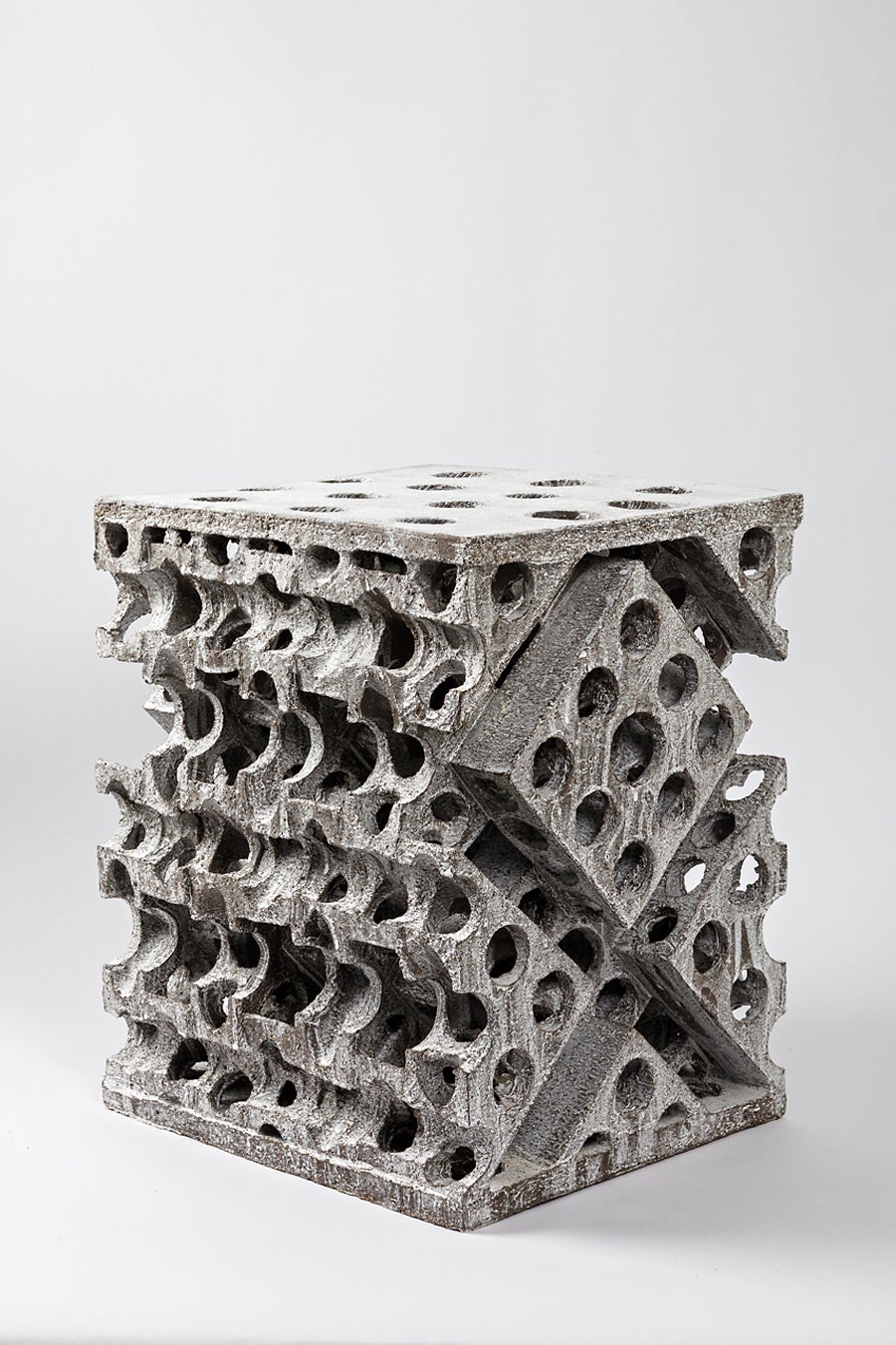
About the Seller
5.0
Vetted Seller
These experienced sellers undergo a comprehensive evaluation by our team of in-house experts.
Established in 2016
1stDibs seller since 2017
156 sales on 1stDibs
Typical response time: 8 hours
More From This SellerView All
- 16th Century Cabinet with Knights Carving from Avignon Workshops 'France'Located in Saint-Ouen, FRCollection Jean Thuile Around the mid-sixteenth century French furnishing evolves in its conception and ornamentation. The start of major archi...Category
Antique 16th Century French Renaissance Cabinets
MaterialsWalnut
- 16th Century French Carved Renaissance CabinetLocated in Saint-Ouen, FRRare carved Renaissance cabinet Period : 2nd half 16th century, ca. 1570 Origin : France, Burgundy or Languedoc This cabinet embody the produ...Category
Antique 16th Century French Renaissance Cabinets
MaterialsWalnut
- Important Renaissance Cabinet from Lyon 'France' with a Decor of PerspectivesLocated in Saint-Ouen, FRAs soon as 1540 France's second Renaissance is in the making, intimately linked to the rediscovery of the Antique world. The development of the printing and engraving industry allows the spread of artworks and models in many cities and countries. The Italian influence can be perceived in every artistic field. While the French king entrust the most talented Italian artists with major projects such as Il Rosso or Primaticcio in Fontainebleau, French artists also travel to Italy to form themselves to this new style. In Italy they get acquainted with the work of Leo Battista Alberti the first to theorize perspective (De Pictura, 1435-36) and architecture (De re oedificatoria, 1541). Those two publications would have a revolutionary impact on arts. Furniture is marked by the work of the most famous Italian architects of the time as well as French architects. Indeed Philibert de l'Orme competes with Alberti and by the end of his life publishes several treaties including one devoted to a theory of architecture (1567). Unfortunately he would not live to complete the second volume. In this treaty he expresses his interest for mathematical norms applied to architecture, copied from the Antique. His journeys in Italy allowed him to accumulate the most sophisticated references. Jean Bullant, another architect of great talent also theorizes his practice. He establishes rules characterizing Greco-Roman art staying faithful to Vitruvius. Following this new inspiration the structure of furniture evolves. From then on appear columns, capitals, cornices, friezes and architraves. The ornamentation uses this inspiration as well with egg-and-dart, palm leaf and rose adorning the most beautiful pieces. In Lyon, crossroad where meet merchants from everywhere those new experiments are welcomed. Lyon florishing printing industry allows the spreading of models and treaties essential to the artist's work. Thus the first publication of Vitruvius' De Architectura in France would be printed in Lyon in 1532. Artists from Lyon rediscover and familiarize themselves with the Antique knowledge very early. They adopt those new ideas and use them in their own creations. Lyon cabinet-makers re interpret Antique architecture and Italian Renaissance palaces to give their pieces a pure and harmonious architectural structure. Grooved pilasters are particularly favored. They are topped by capitals of diverse orders always respecting the sequencing with simpler ones for the lower levels and the richest ones on the higher levels. As for the ornamentation, one of the great distinctiveness of Lyon workshops remains the architectural perspective illusions, drawing inspiration from Tuscany. True masterpiece of the Second French Renaissance this important cabinet illustrates Lyon workshops' taste for fine Italian architecture inspired by Antiquity. An architectural perspective of great quality is treated in symmetry on each panel. This two-bodied cabinet without recess stands on four rectangular feet. The base comprises a molding, a palm leaf frieze and is bordered by a braid. The lower body is divided by three grooved pilasters with Tuscan capitals framing two door-leaves. The two panels are encircled by a moudled frame with palm leaves. They are finely carved with a decor of fantasized architecture depicting an Italian Renaissance palace erected symmetrically on each side of a grooved pilaster. On the ground floor a door opens through a stilted arch while the stories are opened with mullioned windows, dormers and occuli. Two large pegged-boss cladded pillars support the entablature enriched by a palm leaf frieze upon which stands an arch whose coffered intrados is centred by a rose. Behind this arch a pyramid appears, standing in front of a second facade with a window topped by a broken curvilinear pediment under a cul-de-four with a shell. The checker flooring gives depth to the low-reliefs creating vanishing points structuring the panels and guiding the eye of the observer. A thin laurel braid highlights the belt of the cabinet where are located two drawers. Their facades are adorned by palm leaves in hoops. The upper body is encircled with palm leaves. The same ternary division as in the lower body appears. However, the pilasters are topped by Ionic capitals with volutes and egg-and-dart. The door-leaves are framed with flowers. On the panels the artist has designed another architectural decor. On the foreground open two arches on top of grooved pilasters with rectangular capitals adorned with palm leaves. The arches are enriched with braids and the coffered intrados bears a decor of roses. The spandrels also bear a flower decor. In the background another arcature hosts a fluted grooved column topped with double basket acanthus capital, characteristic of Corinthian order. The triangular pediment is interrupted by a choux bourguignon. A large cornice crowns the cabinet. It stands on pilasters and forms an entablature comprising a palm leaf frieze and an egg-and-dart, triglyph and palm leaf cornice. The cabinet's sides have also been carefully considered. The lower body's panels are enriched with an arch rising above a broken pediment portico hosting a twisted column. Flowers garnish the spandrels. An architectural facade completes the decor. The upper body's panels present two arches supported by a facade opened with dormers and mullioned windows as well as cartouches (one bears the inscription 1580 dating the cabinet) suggesting the interior of an Italian Renaissance palace, confirmed by the chandeliers. The flooring leads our gaze to a second arch with a broken curvilinear pediment where stands a flower vase. This arch opens onto a perspective of another facade along a road. Inside the cabinet, on the lower body door-leaves appear two designs. On the right door is depicted a Crucifixion. Saint Mary and Saint John flank the Christ on the cross. In the bottom part is inscribed « Dure uiator abis nihil haec spectacula curas / Pendenti cum sis unica cura Deo. / Tota suo moriente dolet natura Magistro. / Nil qui solus eras caussa dolenda doles. ». The signature [Christoff Swartz Monachiensis pinx[it] / Ioa[nnes] Sadeler sculp[it]] tells us it was made by Johan Sadeler I (1550-1600) after Christoph Schwartz (1548-1592). This engraving belongs to an ensemble depicting the Passion of Christ Johan Sadeler executed in 1589 after an altar piece painted by Christoph Schwartz for the private chapel of Renée of Loraine, wife of Duke William V of Bavaria. This altar piece made of nine copper panels has been destroyed during the 19th century. The Crucifixion panel once in the centre of the altar piece is the only one that survived and is today kept in Munich's Alte Pinakothek. On the left door appears Saint Francis receiving the stigmata. The inscription says : « Signastidomine Servum Tuum. Franciscum. Signis Redemptionis Nostrae ». This Renaissance cabinet with an architectural decor appearing as much in the structure faithful to Antique rules...Category
Antique 16th Century European Renaissance Cabinets
MaterialsWalnut
- 16th Century French Walnut Cabinet with Marble InlaysLocated in Saint-Ouen, FROn the left post of the lower body, is written the date 1596 in a cartouche This cabinet has two bodies. The upper part, set back, is moulded and carved. At the bottom, the cabine...Category
Antique 16th Century French Renaissance Cabinets
MaterialsWalnut
- 16th Century Renaissance Two-Bodied CabinetLocated in Saint-Ouen, FRFormer collection Altounian At the beginning of the reign of Henri II (1547-1559) the furniture’s ornamentation evolves. The few medieval motifs that were still used are eventually relinquished. Furniture becomes more sober showcasing moulded panels and perfect architecture. Cabinet-makers use ornaments such as curved fluted or plain columns, feather quills, roses or winged putti heads. High-relief carving becomes more scarce and compositions lighter. To that end cabinet-makers draw inspiration from Fontainebleau motifs filtering them and adapting them to French taste. During this period cabinet-makers turn into a kind of architects. Indeed the architectural balance of furniture is the centre of their concerns. The study of Antic formulas is then a necessity. From this care given to proportions appear refined cabinets with pure lines. This style is characteristic of the reign of Henri II and disappears soon after under the regency of Catherine de Medici (1560-1574) when an abundance of high and low-relief ornaments comes back on furnitures. This two-bodies cabinet...Category
Antique 16th Century French Renaissance Cabinets
MaterialsWalnut
- French Renaissance Cabinet with PerspectivesLocated in Saint-Ouen, FRThis Renaissance Cabinet reveals the great mastery of the Lyon workshops which are at the origin of its realization. Sculptors and wood-carvers worked here in symbiosis to express an...Category
Antique 16th Century French Renaissance Cabinets
MaterialsWalnut
You May Also Like
- 16th Century Portuguese Wooden CabinetLocated in High Point, NCHandsome and dignified, this antique Provincial cabinet combines understated simplicity with a beautiful auburn finish. Made in Portugal in the 16th century, paneled doors unlock wit...Category
Antique 16th Century Portuguese Country Cabinets
MaterialsWood
- Early 16th century German Gothic Cabinet / SideboardLocated in Troy, NYVery attractive, rare and large Gothic cabinet / sideboard with three drawers over two doors, constructed in three parts. beautiful Gothic tracery work,...Category
Antique 16th Century German Gothic Sideboards
MaterialsWood
Price Upon Request - Early 19th Century French Wooden CabinetLocated in High Point, NCA bleached oak cabinet from early 19th century France. This cabinet’s sumptuously decorated paneled doors open to reveal four large storage shelves...Category
Antique Early 19th Century French French Provincial Wardrobes and Armoires
MaterialsOak
- French 16th and 19th Century Gothic Freestanding Oak CabinetLocated in Troy, NYUnique and rare cabinet with an open base, finished all around, so it could be freestanding in the room, the front panels intricately carved with gothic tracery work, the side and ba...Category
Antique 16th Century French Gothic Cabinets
MaterialsOak
- Early 18th Century Swedish Gustavian CabinetLocated in San Angelo, TXA stunning and unique baroque early 18th century Swedish Gustavian cabinet that features two doors with shelving inside and sets on ball feet. This piece completely breaks down to he...Category
Antique Early 18th Century Swedish Gustavian Wardrobes and Armoires
MaterialsWood, Paint
- 17th Century Painted Oak Homme Debout Cabinet from Southwest FranceLocated in Dallas, TXA Homme debout is a two-bodied cabinet with a drawer separating the sections. This handsome Homme debout from southwest France was hand carved from oak in the 1600s. The period Louis...Category
Antique 17th Century French Louis XIII Cabinets
MaterialsWood, Paint
Recently Viewed
View AllMore Ways To Browse
Small Gothic Cabinet
Antique Knife Case
Case Knife Antique
Small Storage With Wheels
Knife Cabinet
Small Cabinets On Wheels
Gothic Carved 16th
Antique Gothic Decor
Gothic Rose Antique
Antique Rulers Wood
Alpine Cabinet Storage
Naive Carved French
Antique Compass Made In France
Gothic Knife
16th Century Knife
Used Metal Storage Cabinets With Doors
French Display Cases
Antique Solid Walnut Furniture
